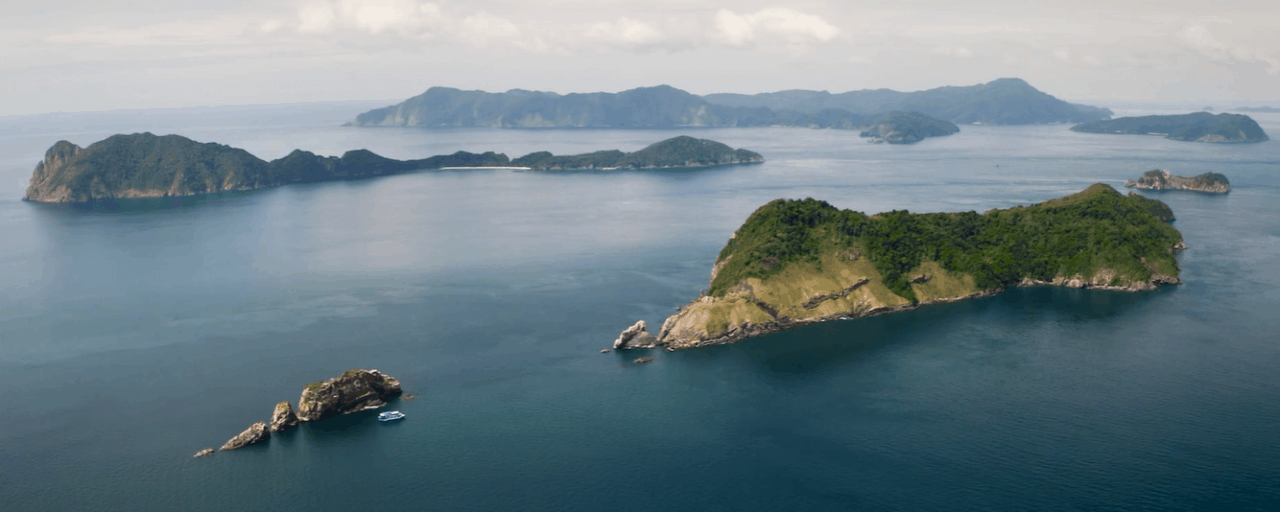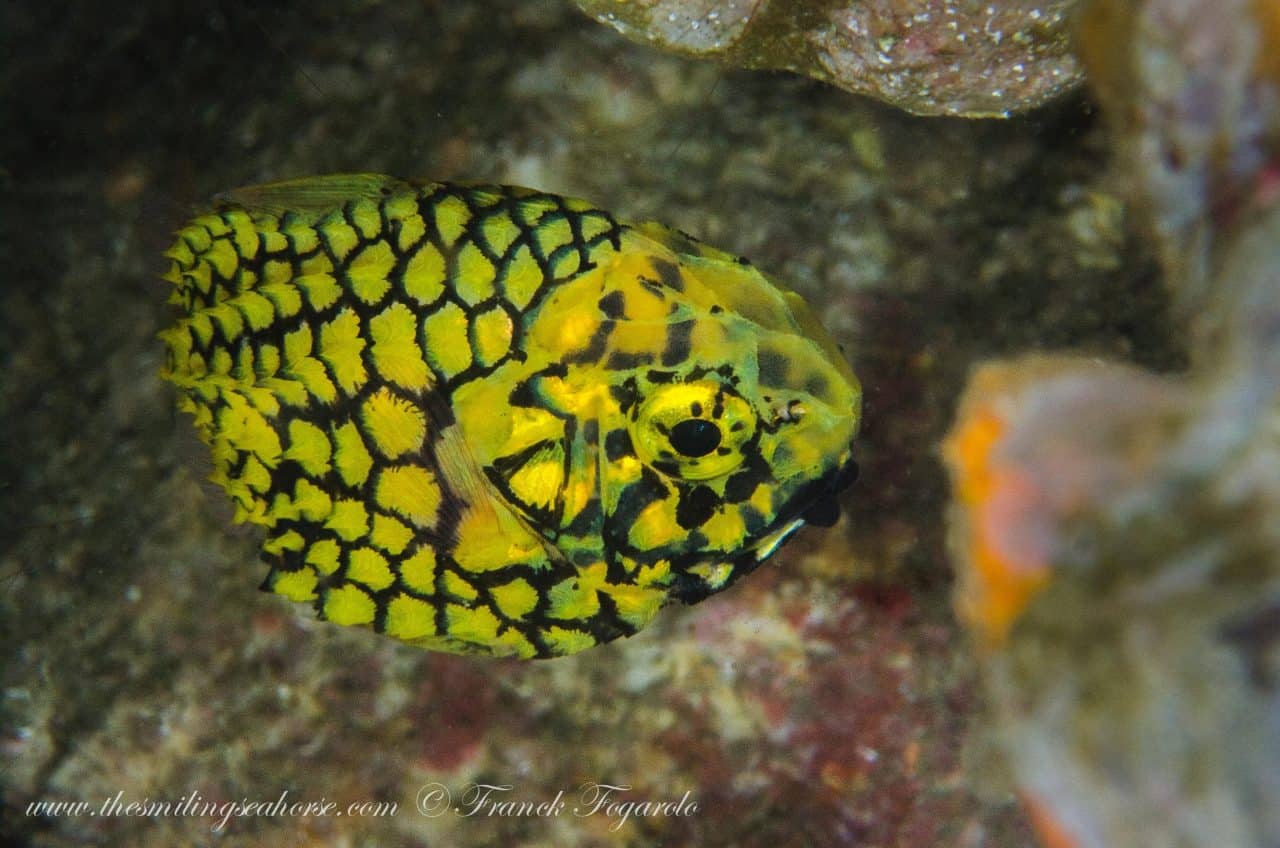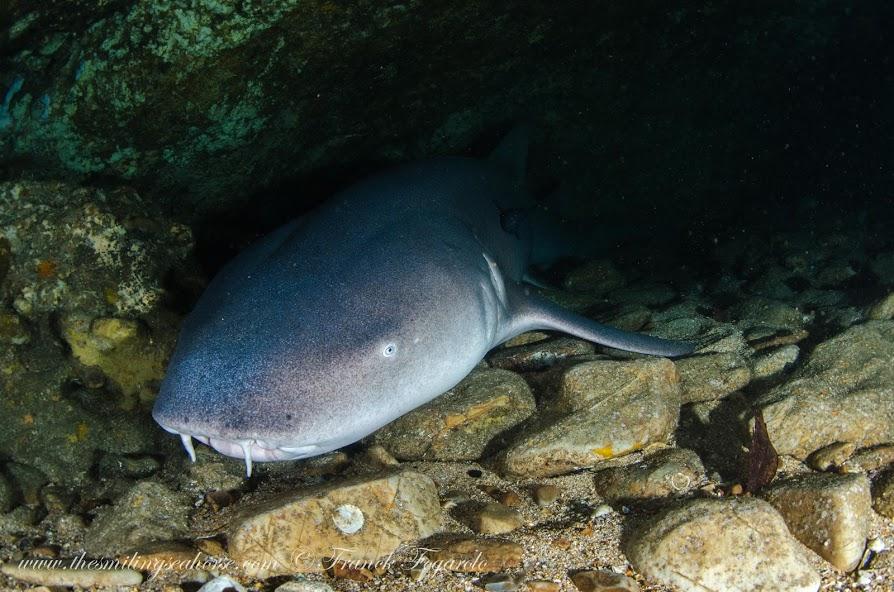Guest post by Camille from The Smiling Seahorse
Every scuba diver wishes to one day be the first person to blow bubbles on a new dive site, but the reality of it is that there are very few remaining places on our planet that we haven’t yet discovered. The Mergui Archipelago might very well be one of the last diamonds in the rough. This mysterious collection of 800 mostly uninhabited islands that span a space of over 36,000 square km off the western coastline of Myanmar, also known as Burma, is largely unmapped to this day. Inaccessible by land, the region was opened to tourism in 1997 but with regulations on visas and travel, there are still few companies offering to cruise this heaven on earth.

Not only will you be alone on every dive site but there is some great diving to experience in Myanmar: the underwater landscape is made of beautiful coral reefs in pristine condition, tunnels and pinnacles, inhabited by colorful tropical fish, schooling barracuda, and trevallies, incredible macro life from the rare harlequin shrimps to ghost pipefish and seahorses all the way to the biggest ocean wanderers: giant manta rays and whale sharks.
How to get to the Mergui Archipelago?
The entry to the Mergui Archipelago is through Kawthoung, at the southern tip of Myanmar. Kawthoung can be reached by plane from the capital, Yangoon, but it is much easier to reach from Ranong. Indeed, Ranong is on the other side of the border, in Thailand, and only 300km north of Phuket. The best travel options to get in the area would be to either fly into Ranong from Bangkok or take on the road from Phuket.
Furthermore, a few diving companies based either in Khao Lak or Ranong offer diving cruises in Myanmar. Indeed, a liveaboard diving cruise is a great way to get to the archipelago and discover it. Based in Ranong, the Smiling Seahorse is the only boat operating exclusively in the Mergui Archipelago. Of course, there is a greater choice of liveaboard options in Myanmar for you to look into.

Best time to go on a diving cruise in Myanmar
The season in Burma starts in October and goes until mid-May when the monsoon season rains start rolling in. Water temperatures sit pretty constantly around 27°C year-round but it is still recommended to bring appropriate exposure protection to keep you in top shape for multiple dives in a day. Night dives in Burma are particularly spectacular so don’t miss out! Some divers also choose to bring reef hooks along for the trip as you can expect fairly strong currents due to the 6-hour tidal change.
Myanmar Liveaboard itineraries
Depending on time and interests you can choose from a variety of cruise packages ranging from 6 days/5 nights to 9 days/8 nights which include between 17 and 29 dives. With 4 dives and 4 meals per day on the schedule, you can leisurely embrace your inner fish in style. No matter the duration of your trip you will be treated to some of the most coveted dive sites of the area with chances to see a variety of animals ranging from tiny macro life to large pelagic fish.
Every cruise visits Western Rocky, a tiny island with a beautifully sunlit passage straight through its center in the south of the Burmese seas. It also features 4 islets whose walls are covered in colorful sponges and soft corals that are certainly worth a visit. Here we often see a large number of lobsters, harlequin shrimp, frogfish, and many more.

Black Rock is considered the best dive site in the archipelago and is only visited by those adventurers on the longer cruises as it is quite far north. This dive site’s plunging walls descend to 100m and often treats its visitors to stunning 35m+ visibility. Black Rock is most famous as Giant Oceanic mantas breeding ground but gets close to the rock formations to catch a glimpse of ghost pipefish, and endemic tapestry shrimps or look out into the blue for schools of tuna, mackerel, and barracuda. You can even meet some larger creatures like eagle rays and large blotched stingrays.
For those enthralled by swim thought, Shark Cave will be a highlight. With many underwater caves and tunnels or large rocks hiding regularly nurse sharks up to 4m long or blotched stingrays and whiptail rays. The seafloor before the shark cave is carpeted with yellow sponge and once you pass the last tunnel, a coral garden bordered by a sandy area provides a home to giant moray eels, mantis shrimp (both spearing and smashing), cowries, and sea slugs of all types.

North Twin, located several miles offshore, offers a topography made of granite boulders alternating with sandy patches. The site is covered in gorgonian sea fans and soft corals. Many schooling fish call this place home, such as big-eyed trevally, batfish, snapper, and yellow-tailed barracuda. Plus, keep your eyes open in the blue for the passing mantas. Moreover, some special cruises even get the chance to go through the real unchartered territory of the northern Torres Islands or the western Burma Banks. This is where the thrill-seekers get their kicks with exploratory diving and where you have the best chance of pioneering a dive site.
The Burma banks are also known as a shark destination and we often see hunting nurse sharks and species unseen on the rest of the Mergui Archipelago like the honeycomb Murray or clown triggerfish.
As far as bucket-list dive sites go, the Mergui Archipelago has to be one of the least known diver’s paradise. With fewer than 50,000 travelers to the region every year and a lot fewer divers, you can count on private dive sites, not shared by any other dive boat.

 Private Scuba Tuition – Learn Scuba Skills.
Private Scuba Tuition – Learn Scuba Skills.
Leave a Reply
Want to join the discussion?Feel free to contribute!